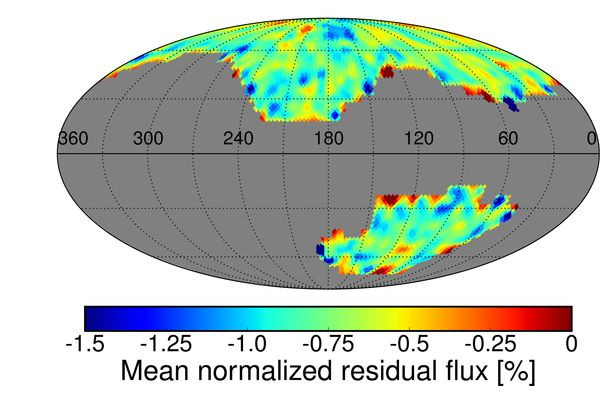Hydrogen Gas In Milky Way's Halo May Explain Where Its Missing Mass Is

Scientists have long known that there is something amiss with their current understanding of the composition of the Milky Way — the galaxy we call home.
Painstaking measurements of the cosmic microwave background — the omnipresent radiation that is the afterglow of the Big Bang — tells us that a sixth of all matter in our galaxy is ordinary, while the rest is dark matter. However, if we add up the mass of all the stars, gas and dust we can see (all made up of normal, or baryonic matter), it only comes up to roughly 65 billion solar masses — way below the 150 to 300 billion solar masses it should be.
“Because the ratio of normal matter to dark matter is now very well known, for example from measuring the cosmic microwave background, we have a pretty good idea of how much baryonic matter should be in the halo. But when we add all the things we can see with our instruments, we get only about half of what we expect, so there has to be a lot of baryonic matter waiting to be detected,” Dennis Zaritsky, an astronomer at the University of Arizona, explained in a statement released Tuesday.
In a study published Tuesday in the journal Nature Astronomy, Zaritsky and his colleagues describe the first-ever detection of diffuse hydrogen gas in a vast halo surrounding the Milky Way. The authors of the study posit that this cloud of hydrogen gas — whose existence has previously been hypothesized based on observations of other galaxies — could account for the Milky Way’s missing baryonic mass.
“The gas we detected is not doing anything very noticeable. It is not spinning so rapidly as to indicate that it's in the process of being flung out of the galaxy, and it does not appear to be falling inwards toward the galactic center, either,” Zaritsky said. “It's like peering through a veil. We see diffuse hydrogen in every direction we look.”

In order to make these observations, the scientists perused through data gathered by the Sloan Digital Sky Survey and looked for spectra of other galaxies in a narrow spectral line called hydrogen alpha. This, coupled with computer simulations of how galaxies like the Milky Way form and evolve, allowed them to predict the presence of large amounts of hydrogen gas stretching far out from the center of the galaxy.
"In one direction, we see the gas coming toward us, and the opposite direction, we see it moving away from us," Zaritsky said in the statement. "This tells us that the gas is not in the disk of our galaxy, but has to be out in the halo."
© Copyright IBTimes 2025. All rights reserved.






















